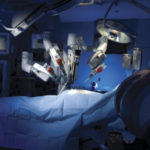Airplanes serve around 3.1 billion people every year around the world. People use this mode of transport to relax, to seal a business deal, for adventure and for love. However all this comes at a cost. The planes use a gallons of fuel thus releasing tonnes of CO2 harmful for the atmosphere. A new revolutionary technology is being developed at UK’s Centre for Process Innovation (CPI) which will enable the future generation planes to have a windowless fuselage.
Which means that instead of seeing a small view through the windows, the passengers will be in for a treat with constant views of the sky and space as they fly. Passengers who won’t get the window seat need not be disappointed as they will get large seat-back displays which could be used for the same kind of view, with the ability to adjust lighting along with other features like in-flight entertainment.
The wide-angle panoramic camera on the plane will give the passengers a 360 degree view. An added feature would be subtle cabin lighting made possible with gentle glowing walls of the plane. Not only that, the lighting panels will help the passengers to adjust to time zone differences in case of long journeys by allowing color changes associated with sunrise and sunset. Such technologies promise a really unique and fascinating travel experience. The tagline “the windowless cabin with a view” as proclaimed by scientists and engineers fits the bill. Check out the cool video by CPI.
The planes will showcase high definition flexible displays which will be ultra-thin and lightweight thereby reducing the overall weight of the planes. The weight of the planes has always been a great concern as 80% of a fully loaded plane comprises of the weight of the plane and its fuel. Thus, if the plane is lighter, less fuel will be consumed. Less fuel would also mean less CO2 emissions thus making air travel a much cleaner environment. Reduction in the components of the planes will mean a cost reduction of the total cost of the plane which could be followed by lower air fares. It seems like a win-win situations for both the manufacturers and the consumers.
Although it looks like a rosy picture, some travelers may still feel uncomfortable. Airline Companies could use those new displays which replace the windows for advertisements, which could be irritating at times. So maybe the airline companies would use this as a strategy to increase their revenues by providing premium tickets which would have “real windows” i.e. seats without ads. But hey, isn’t this an AD-AD World?
What about software glitches? What if somebody hacks into the display? Also, these displays will tend to heat up, using much more energy to display what’s outside the plane. We are sure they will make some fail-safe arrangements in the event of a software failure to show display. But yet, one has to be prepared for it.
A lot of work is still left as CPI is in negotiations with companies who will provide flexible OLED technologies for the Aerospace Industries. According to experts, the first windowless flight can be expected in a decade’s time. The research for this new technology will take another 5 years until it goes into full production.
Many believe that the evolution of aviation industry has been rushed for monetary gains and air travel isn’t 100% fool proof. The benefits of travelling by air has clearly overshadowed this fact. Man has reached space and is still trying to understand its reason for existence in this universe. We hope that this future technology will facilitate air travel with a complete renewed experience.
[poller_master poll_id=”3″ extra_class=””]
Image Source : UK-CPI.com






































